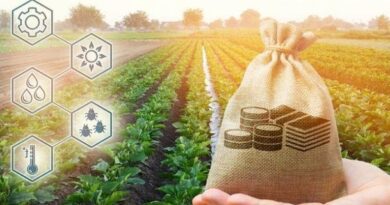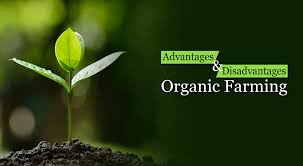Complete Guide on Maintenance of Soil Nutrient
Organic inputs derived from plant remains provide most of the essential soil nutrient elements, but usually insufficient quantities. Because of their richness in carbon, organic resources provide an energy source for soil microorganisms which drive the various soil biological processes that enhance nutrient transformation and other quality parameters of soil.
As these organic materials undergo the process of decomposition (or breakdown) in soil, they contribute to the formation of soil organic matter (SOM), which is generally considered to be the backbone of soil fertility.
Most of the lasting impacts of organic inputs on soils are related to the functions of SOM.
During decomposition, the organic materials interact with soil minerals forming complex substances that influence nutrient availability (e.g. binding of otherwise toxic chemical substances such as aluminum or leading to better release of phosphorus bound to soil mineral surfaces).
Organics as Sources of Soil Nutrients
The role of organic materials as nutrient sources is underpinned by the biological processes of decomposition, which involve the biochemical breakdown of dead organic tissue into its inorganic constituent forms, primarily through the action of microorganisms.
The process by which essential nutrient elements in unavailable organic forms are converted into their inorganic forms that are available for use by growing plants is known as mineralization. It is during decomposition of organic materials in soils that SOM is formed and nutrients are released.
SOM can therefore said to be made up of organic materials of diverse origin that are at various stages of decomposition through the action of soil microorganisms. Soil microorganisms also grow, multiply and die during the process of decomposition and, in turn, contribute to the dynamic changes in SOM formation and mineralization (nutrient release).
The amounts of SOM formed as well as quantities of nutrients released depend on the amount and frequency of organic inputs applied to the soil. Under undisturbed natural vegetation such as permanent forests or grasslands, there is usually equilibrium between the organic materials added to the soil in the form of plant litter and the SOM status because nutrients are tightly recycled and not removed in crop products.
When the soil is used to cultivate crops, however, the rate of SOM formation and nutrient release is less than the demand for nutrients by crops, particularly when farmers aim for commercial yields.
Extra effort is therefore required to add more organic materials to the soil, necessitating the use of mineral fertilizer to increase the amount of organic resources available for use in crop production.
Factors Affecting Organic Matter Supply of Nutrients
Soil organic matter is a significant source of nitrogen (N), phosphorus (P) and sulfur (S) in crop production.
The supply of these nutrients from SOM is dependent upon a number of factors including:
The quantity and frequency with which organic inputs are added to the soil;
The quality of the organic resources; and
The effect of soil type (e.g. texture and mineralogy) and environmental conditions (e.g. moisture and temperature) that provide an environment in which the processes of decomposition and mineralization occur.
The Role of Organic Matter in Soil Fertility

By directly supplying available forms of C that stimulate soil biological activity and contribute to SOM formation, organic inputs also influence soil chemical and physical properties.
The roles of SOM in improving soil productivity include:
Regulation of the rates and amounts of nutrients released for plant uptake in soils;
Improvement of soil water infiltration rate and soil water-holding capacity;
Increasing cation exchange capacity, or the soil’s capacity to store nutrients;
Enhancing soil aggregation (SOM particles act as binding agents), improving soil structure, reducing bulk density and promoting good aeration; and
Binding of toxic elements in soils and minimizing their impacts on growing plants.
Use of Mineral Fertilizers
Fertilizer is a material that contains at least one of the plant nutrients in chemical form that, when applied to the soil, is soluble in the soil solution phase and ‘available’ for plant roots.
Some fertilizers such as urea, potassium chloride (KCl) and diammonium phosphate (DAP) are completely soluble in water, while others such as rock phosphate and dolomite are partly soluble and release nutrients slowly over several months or years.
The objective of fertilizer use is to deliver nutrients to crop plants. As a guide, fertilizer materials should contain at least 5% of one or more of the essential nutrients in an immediately available form.
Read Also : Phosphorus Content of Soils and Factors Influencing Phosphorus Availability in the Soil
The nutrient content of proper mineral fertilizers is always stated on the bag label. The P, potassium (K) and magnesium (Mg) content is expressed in the oxide form, i.e. P2O5, K2O and MgO.
Secondary and micronutrients are often included in compound fertilizers. Note that mineral fertilizers have been discussed extensively previously in this study material.
Use of Soil Amendment such as Lime
Liming materials are used to increase the pH in acid soils where crops are intolerant of high aluminium (Al) saturation, which often (but not always) accompanies low soil pH. By correcting soil pH and supplying calcium (Ca), lime improves the soil environment for plant growth.
In some very acid soils (pH <5.5), Al and manganese (Mn) toxicity is prevented and P and molybdenum (Mo) availability is increased following an application of lime.
Other microbiological processes such as nitrification and N2-fixation are also improved and liming may contribute to improved physical soil properties because of increased microbial activity.
Acidity is often associated with highly leached soils which are deficient in Ca and Mg so that lime plays an important role in supplying these nutrients. Lime and liming materials have been discussed earlier in this study material.
Other Soil Fertility Management Practices
Other measures are often needed besides the use of suitable fertilizers and organic inputs, particularly if there are other soil fertility constraints that prevent good crop growth. Some examples are given below, recognizing that this list is not necessarily complete:
1. Soil Acidity Correction
Some soils are strongly acid, either because of inherent soil properties or due to long term acidity-inducing management practices (e.g. <4) the long-term use of ammonium-based fertilizer).
Acidity in itself is often not the major problem, unless the pH is very low (e.g. but acid soils often have high exchangeable Al contents which severely restrict the growth of some crops (e.g. maize).
Lime application rates should be calculated to reduce exchangeable Al (to about 15%) rather than increasing soil pH.
2. Supply of Deficient Micronutrient
Deficiencies to particular micronutrients may be observed (e.g. Zn, B). Such deficiencies are often expressed during plant growth. Some fertilizer blends such as Mavuno fertilizer in Kenya contain micronutrients.
3. Breaking Hardpans
Continuous management on soils that are prone to compaction can result in a sub-surface soil barrier to crop root growth.
Breaking such hardpans by deep ploughing or chisel ploughing to a depth of up to 30 cm allows roots to penetrate the hardpan and access more nutrients and water, resulting in better crop growth.
4. Water Harvesting
Nutrients will only be recovered efficiently if the crop has sufficient water. The amount of rainfall captured and made available to crops can be increased in areas that are prone to drought.
Most approaches aim to harvest extra water by installing structures that decrease runoff (e.g. the Zaï system used in the Sahel or the use of planting basins in southern Africa), or by maintaining organic mulch on the soil surface to promote infiltration and reduce evaporation from the soil surface.
All such practices require extra resources in terms of labour or organic materials and an assessment of the risk of drought stress in a particular area will determine whether the deployment of these extra resources is worthwhile.
5. Erosion control
Soil erosion can be a serious problem, especially on fields with steep slopes, but also on slightly sloping fields with coarse-textured top soil that is prone to erosion.
Soil organic matter and nutrients are lost in eroded soil, which may substantially reduce the agronomic efficiency of applied inputs.
Several measures can assist in controlling erosion, including planting of live barriers (e.g. grass strips), construction of terraces, or surface mulch application.
In summary, organic inputs used in soil fertility management commonly consist of livestock manures (farmyard manure), crop residues, woodland litter, household organic refuse, composted plant materials (compost), and any plant biomass harvested from within or outside the farm environment for purposes of improving soil productivity.
In urban and peri-urban areas, organic inputs can also be made up of industrial organic waste and sewage sludge.
Organic resources have multiple functions in soil, ranging from their influence on nutrient availability to modification of the soil environment in which plants grow.
There are however other sources which contribute in soil fertility maintenance and sustainability. They include use of inorganic fertilizers, soil amendments and water harvesting.
Organic resources have multiple functions in soil, ranging from their influence on nutrient availability to modification of the soil environment in which plants grow.
Other measures are often needed besides the use of suitable fertilizers and organic inputs, particularly if there are other soil fertility constraints that prevent good crop growth.
They may include acidity correction, supply of micronutrients, water harvesting and erosion control.
Read Also : Ways To Generate Income From Chemical Wastes









